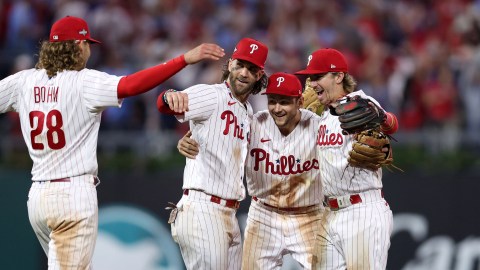For Red Sox fans getting their first real look at the new Marlins Park this week, there's probably a few things that immediately grab your attention — for better or worse.
After all, the place looks more like a theme park than a major league stadium.
There's the strange home run sculpture in center field that looks like it was created by someone on an acid trip. There's the aquatic backstop that takes the team name way too far. There's the bobblehead museum that's enough to give any kid nightmares for the rest of the summer. And there's green. Lots and lots of green.
One "feature" the organization didn't bargain for, yet is as glaring as any of the aforementioned quirks, is the dead grass. Rather than looking like a big league park, which should feature the best grass in all of sports, the Marlins Park playing surface looks like some crazed wino set fire to it.
That's a shame, not only because it's a $515 million home to a Major League Baseball team, but also because it paints the grounds crew — which in all likelihood works as hard as any in the bigs — in a negative light. While we should be raving about a brand spanking new playing surface, we're seeing brown spots and heinous patches. Those idiosyncrasies accompany reports of a leaky roof, which, as you'd expect, creates a rather unpleasant experience when the trademark T-storms roll in.
In reality, the grass condition will likely have little impact on the Marlins' success this year, and it isn't the first time we've seen new stadiums struggle with finding the perfect upkeep method. But it is somewhat alarming to see the actual playing surface compromised amidst the carnival-style extracurriculars the new park offers. Obviously, the Marlins didn't intentionally turn the other cheek on the playing surface (the lack of sunlight as a result of closing the roof poses a major threat), but it still comes off as if the bells and whistles were what reigned surpreme in the planning process.
Unfortunately, that perception isn't all that new, either. Tropicana Field has had issues with its catwalks, Minute Maid Park's center field hill still makes no sense at all, and we've seen fence distances scrutinized accordingly when certain home run trends arise. Every field has its own set of problems, but when so much money is invested into a ballpark's construction, the hope is that we can at least expect optimal conditions for what matters most — the action on the field.
Don't get me wrong, the bells and whistles are important. They're what appeal to the casual fan, they could enhance the ballpark experience, and they give each field a sense of identity.
They're also what make baseball enthusiasts shake their heads, especially when the actual diamond features its share of blemishes.
Photo via Facebook/Marlins Park




